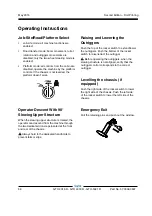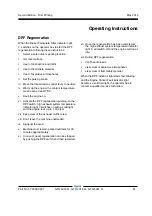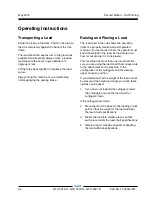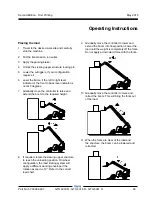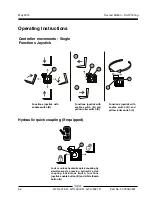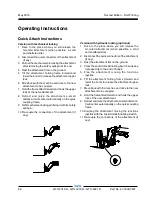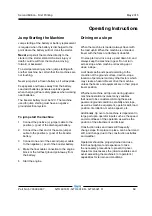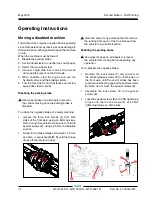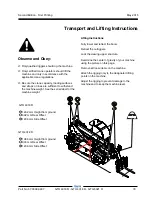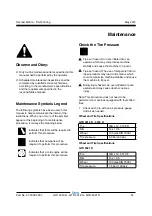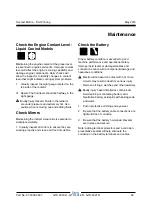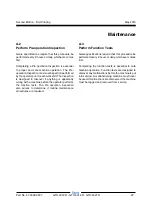
May 2015
72 GTH 4016 R - GTH 4018 R - GTH-5021 R Part No. 57.0009.0607
Second Edition - First Printing
Moving a disabled machine
Tow the machine only when no alternative is possible,
since this operation may result in serious damage to
the transmission. When possible, repair the machine
on site.
When the machine must be towed:
1. Disable the parking brake.
2. Set the transmission to neutral (see next page).
3. Select the two-wheel steer.
4. Connect a rigid draw bar to one of the two tie
down points present on the front axle.
5. When possible, start the engine and use the
hydraulic drive and the braking system.
6. Tow the machine for short distances and at low
speed (less than 5 km/h).
Disabling the parking brake
Use wheel chokes on all wheels to prevent
the vehicle moving once the parking brake is
disabled.
To unlock the negative brake of a faulty machine:
•
remove the three lock screws (
1
) from both
sides of the front axle, using an 8mm hex key.
Note: during this operation make sure to hold the
special screws (
2
), using a 25 mm combination
wrench.
•
Screw in the brake release screws (
3
), 1/2 turn
at a time, in sequence (
A
,
B
,
C
) until the torque
drops off sharply (4÷5 turns).
Clear the area of any personnel before remove
the locking from each of the four tires and tow
the vehicle to a suitable location.
Enabling the parking brake
Use wheel chokes on all wheels to prevent
the vehicle from moving before executing any
operation
.
To re-activate the negative brake:
•
Remove the lock screws (
1
) and unscrew all
the brake release screws (
3
) on both sides of
the front axle, until the end of stroke has been
reached (until beating against the special screws
2
). Note: do not move the special screws (
2
).
•
Assemble the lock screws (
1
) to the special
screws (
2
).
•
Lock the special screws (
2
) at 30 Nm tightening
torque and then lock screws (
1
) at 20 Nm
tightening torque on both sides.
A
C
B
u
v
w
Operating Instructions

